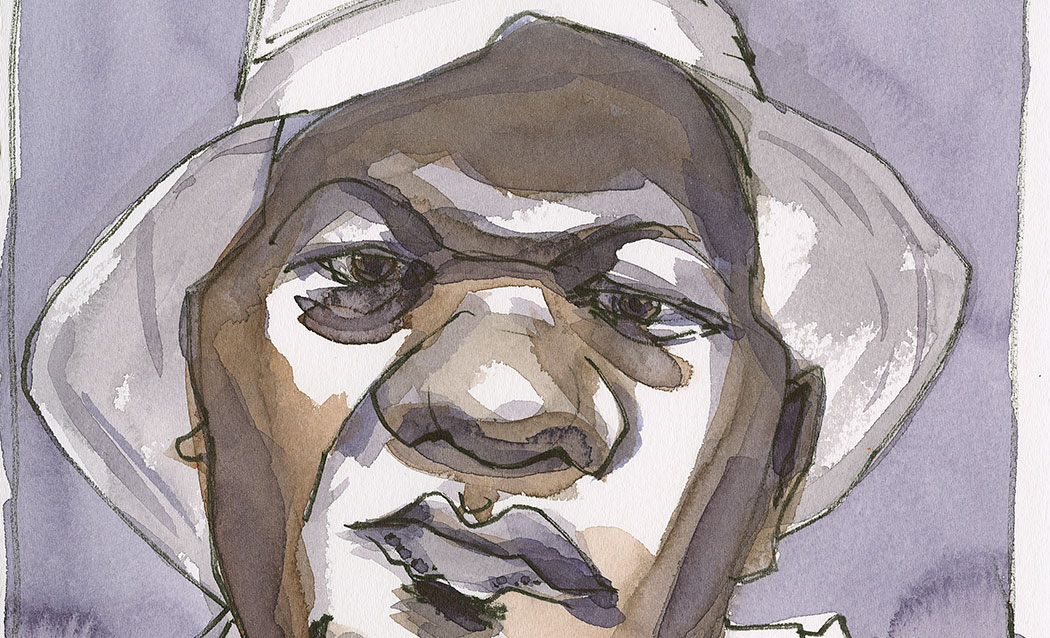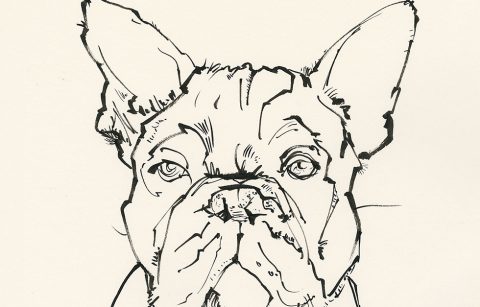 Yep, hats; just me drawing people with hats on.
Yep, hats; just me drawing people with hats on.
Sometimes I worked in my current journal, sometimes I worked on loose sheets for my loose sheets journal.
I found some while moving old digital file.
Some (when they were on loose sheets) might end up on the wall.
I stopped looking for people in hats after 2019 because the Minnesota State Fair was cancelled in 2020 because of covid…
I’m sure it’s something I’ll come back to.
If a subject comes to you, just dive in. They are fun to look a back on.
Brush pen and watercolor on Fabriano cold press watercolor paper in a hand bound journal.























Roz, how did you organize your loose-sheet journals? As a beginner/student, I’ve tried to keep my sketches and paintings in sketchbooks both for future reference and to organize. However, there are times when I have taken on online class where I have needed to use watercolor paper which isn’t part of the Strathmore mixed media book you have recommend and I fully endorse. I’ve made dated comments on the loose sheets as teaching tools, but now the sheets are bulky & not consistent sizes, and are taking up space. I’ve considered turning them into a spiral notebook to keep them in a sketchbook-type format or even turning them into funky notecards to friends. Will you please advise me? Thank you for sharing your vast mental warehouse of knowledge and experience (and fine BBC shows – I recognized on of my faves Colm Meaney a month of so ago). Best to you.
I just wrote a long reply and lost it. Drat. This link may open for you (many things are archived now) and it explains my indexing of my book journals.
https://rozwoundup.com/indexing-my-journals
Basically start each year with Volume A, B, C etc. Start the pagination at 00001 and continue the page numbering from one journal to the next so Volume G might start at page 609 for instance.
Index it all in a File Maker Pro database using page number, vol. number, key words. Then I can find anything by any way imaginable.
For loose sheets I started a Single Sheets (SS and page number) system but turned to LS and page number system because I liked loose sheets better. I use 9 x 12 inch archival boxes because that’s what I use for oddball papers EXCEPT I also keep on larger box for larger pieces. I know what sizes of paper I use—I recommend if you don’t to go with the smallest LARGE box you can fit them in without folding. There are 22 x 30 inch boxes to hold watercolor sheets. When doing page numbers to index I start with the 9 x 12 inch box with contents organized chronologically and page LS22-01-001 through whatever (the 22 being the year 2022, the 01 being the first box, and then the page number) and if there is another 9 x 12 inch box it is LS22-2-301 (starting right up where the last box ended, do it next, and so on through to the large box. The boxes are labeled with a date range so it makes it easy for me to index and find anything as long as I keep the prefix LS the numbers in the index file form unique groupings and it’s not intertwined, but they all come up mixed together when you search for the keyword, so you would find all the book and loose sheet stuff related.
I keep life drawing sheets in a portfolio that is very large. Large newsprint sheets aren’t archival so after a session I photograph them digitally in order and then store them digitally in order Year folder with monthly folders. Then I can look at them and see things about my process like stamina and energy within a session—things important to know when you start a large project or need to make work deadlines etc.
The originals are in that large portfolio until it’s too full and then I toss most of it saving only a few favorites and keep going. The life drawing stuff doesn’t have indexing or page numbering. I know from the folders which year, and month, and I do have the model’s name as those are the ways I would need to go to find what I wanted in those pieces.
I hope this helps. I think you need to think about how you use the sketches you make and how you might need to recall them. Then go with the largest container that will hold your output in a year (easiest to organize). I tend to go through one 9 x 12 inch box which holds about 300 loose sheets depending on paper thickness, and one large 22 x 30 inch box, a year. And as stated already I use the portfolio for life drawing.
The most important thing is to sit down and think how you are going to use this material and access it and then come up with a system that works for how you think and work. And it needs to be something that you can do in a few minutes. (It takes only a few minutes for me to index an entire volume when I finish it and I do that right way so that things don’t build up. I also tell my students to not try to go back. Go forward, otherwise you’ll spend your whole life indexing past work and not doing new work—of course since I’ve keep a journal since early childhood and always been organized it’s easy for me to say this because I’ve always organized my stuff—but I did index by hand initially and then only certain pages, and then did a short stint in Word, until a friend turned me on to File Maker Pro—so the indexes before 1998 have to be looked at manually not digitally.
But it’s better to do that than spending time trying to redo them, which I certainly wouldn’t even think of doing now with only a few hours a day of eye time—I’d rather be painting.
Oh, one other thing I forgot. When working on long projects I will use the banker’s box system—everything related to the project goes into a banker’s box, but those are not indexed in anyway, just give the project name, but if I want something out of that project it will be obvious to me which box to look in. On some projects with artwork larger than banker’s box dimensions I have a banker’s box for the written drafts and art research etc., and then a larger box to hold all the project art. This is a pretty standard publishing approach to archiving materials which I picked up when working in publishing before I went off on my own with my own design business.
Hope this helps.
It sure does, Roz, and it gives me a lot to think about and work on. I especially appreciate the advice on creating a project box. I’m working on a children’s book where I am writing the story and illustrating it. Trying to insert all my notes and clippings and sketches into one sketchbook is getting unwieldy and inhibits the collection of ideas. I want to start that today. Thanks again, teacher and mentor.